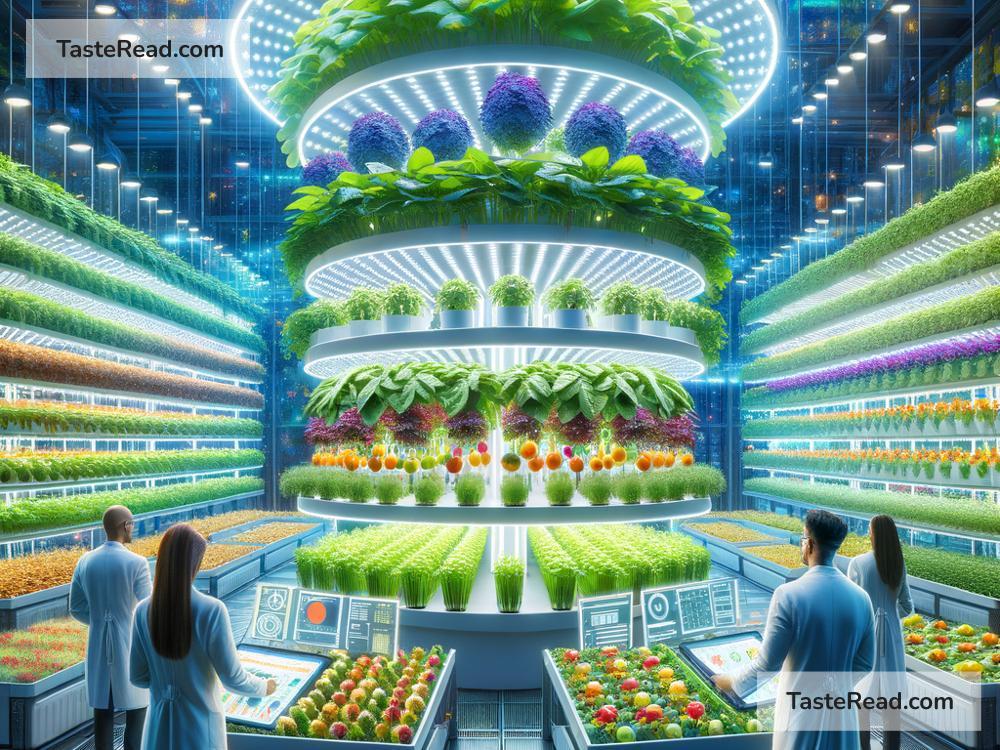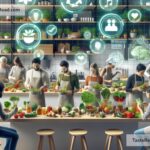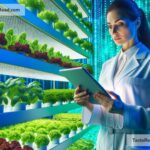Future of Food and Planetary Health: A New Path for a Sustainable Tomorrow
As our planet faces growing challenges like climate change, biodiversity loss, and hunger, the way we grow, consume, and think about food has become more important than ever. The future of food is not just about feeding more people—it’s also about protecting the health of the Earth and ensuring that future generations can thrive. By looking at innovative solutions, shifting our habits, and supporting change, we can build a food system that helps both people and the planet.
Why the Food System Matters
Food is essential for life, but the way we produce and consume it has a major impact on the environment. Agriculture accounts for about a quarter of global greenhouse gas emissions, and industrial farming often leads to deforestation, soil degradation, and water pollution. Meanwhile, millions of people around the world don’t have enough to eat, while others waste vast amounts of food. These problems show why we need to rethink the system that puts food on our tables.
Challenges We Face
The world is expected to have nearly 10 billion people by 2050, which means we will need to produce more food while dealing with limited resources like land and water. At the same time, climate change is making it harder to grow crops. Rising temperatures, unpredictable weather, and changing ecosystems all threaten food production. If we continue using unsustainable farming practices, we risk pushing the planet past its limits.
A Vision for the Future
The future of food calls for big changes. Scientists, farmers, businesses, and everyday people all have a role to play. Here are some key ideas that could shape the food system of tomorrow:
1. Sustainable Farming Practices
Regenerative agriculture, which focuses on improving soil health and working with nature instead of against it, is gaining attention. Practices like crop rotation, agroforestry (planting trees alongside crops), and reducing chemical use can help farmers grow food in a way that restores ecosystems and captures carbon from the atmosphere.
2. Alternative Proteins
Traditional meat production—especially beef—has a huge environmental footprint. Raising livestock consumes large amounts of land and water while contributing to greenhouse gas emissions. To address this, many companies are creating plant-based meat, lab-grown meat, and insect-based protein as alternatives. These options use fewer resources and produce less pollution, making them better for the planet.
3. Technology and Innovation
Technology is helping farmers work smarter, not harder. Precision agriculture uses tools like sensors and satellite data to monitor crops and apply water and fertilizers only where they are needed, reducing waste. Vertical farms, which grow crops indoors in stacked layers, use less land and water while operating year-round. Genetic science is also producing crops that are more resistant to pests, diseases, and extreme weather.
4. Reducing Food Waste
One-third of all food produced globally is wasted, which is bad for both people and the environment. This wasted food ends up in landfills, releasing methane—a powerful greenhouse gas. Simple solutions like better storage, transportation, and smarter packaging can help reduce waste. On a personal level, consumers can plan meals better, compost leftovers, and avoid throwing away edible food.
5. Eating for the Planet
Shifting to a diet that includes more plants and less meat is one of the easiest ways to reduce our impact on the environment. This doesn’t mean everyone has to become vegetarian or vegan, but even reducing meat consumption by a little can make a big difference. Healthier, plant-focused diets are also linked to reducing the risk of chronic diseases like diabetes and heart disease.
Planetary Health: Feeding People Without Harming the Earth
Planetary health is the idea that human health depends on the health of the planet. The foods we choose, the farming methods we use, and the systems we support all affect this balance. Future diets need to not only nourish people but also reduce our environmental footprint. For example, foods that require less land, water, and energy—like grains, fruits, and vegetables—are generally better for both people and the planet.
Working Together for Change
Fixing the food system is a big job, but it’s possible if we all work together. Governments can create policies that support sustainable farming and renewable energy. Businesses can invest in green technologies and reduce waste in their supply chains. Schools and communities can teach people the importance of healthy, eco-friendly eating. And individuals like you can make small changes every day, like eating locally grown food or cutting down on packaging waste.
Hope for the Future
The future of food is not just about solving problems—it’s about creating opportunities for a better world. Imagine a future where every child has enough healthy food to grow strong and every meal helps restore the planet instead of hurting it. It’s a vision worth striving for, and the steps we take today can bring us closer to making it happen.
By choosing sustainable options, supporting innovation, and thinking about the health of the planet in everything we do, we can reshape the food system for the better. Together, we can ensure that our planet remains healthy and that everyone has the chance to thrive. The future of food is in our hands, and it’s up to all of us to make it a sustainable and delicious reality.


